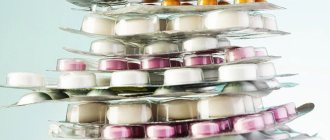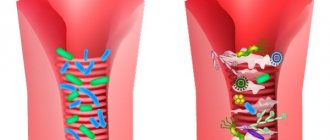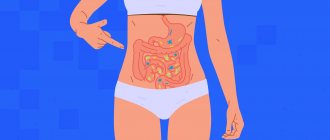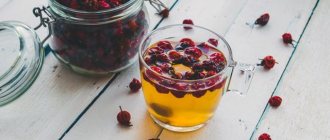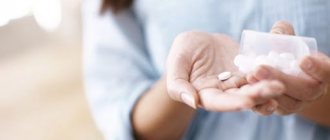Considering the important function that living bacteria perform in our body, ignoring the balance of microflora in the intestines during treatment with antibiotics can lead to various adverse consequences - ranging from banal diarrhea to serious immunological disorders. Probiotics during antibiotics, as well as after etiotropic antibiotic therapy, are an effective method for the prevention and treatment of dysbiosis (dysbacteriosis) - this is the opinion of leading experts in various fields of medicine around the world. This is also confirmed by numerous clinical studies in the USA, Europe, Ukraine and many other regions. offers the best probiotics when taking antibiotics - Apibact® and Symbiter®. Below we will look at:
- How do antibiotics affect the intestinal microflora?
- Can I take probiotics while being treated with antibiotics?
- How long to take live bacteria after antibiotics?
- Why are Apibact® and Symbiter® the best probiotics for antibiotics?
- How to choose a children's probiotic when taking antibiotics?
Antibiotics and probiotics
Antibiotics are one of the most important groups of drugs that are used in almost any medical field. The presence of antibiotics in the arsenal of a modern doctor makes it possible to fight the most dangerous infectious diseases and their complications. But do not forget that taking antibiotics, especially long-term, never goes away without leaving a trace.
Most antimicrobial drugs inhibit the vital activity of bacteria, as well as their ability to reproduce, including those found in our intestines - beneficial microorganisms that provide important digestive processes and immune responses. That is why we recommend using probiotics with antibiotics starting from the first day of etiotropic therapy.
Basic principles of treatment
The components of antibacterial drugs penetrate the systemic bloodstream, creating a maximum therapeutic concentration in the large intestine. This leads to intensive destruction of the cell membranes of beneficial lacto- and bifidobacteria, inhibition of their growth and reproduction, and then death. It is necessary to carry out competent treatment with the following drugs:
- probiotics
, which include beneficial microorganisms that quickly populate the large intestine; - prebiotics
containing nutrient media for bifidobacteria and lactobacilli remaining in the body; - enterosorbents
capable of clearing the gastrointestinal tract of remnants of antibacterial agents; - immunostimulants
that restore the functioning of the immune system; - balanced vitamin-mineral complexes
that have a general healing effect.
It is often possible to get rid of the consequences of antibiotic therapy by taking all of the above remedies for 1-2 weeks. But the drugs of first choice are always eubiotics - probiotics and prebiotics.
Causes of dysbiosis when taking antibiotics
The sensitivity of microflora to antibiotics is not selective. Even modern drugs with antibacterial activity are not able to act only on individual pathogenic microorganisms. Medicinal drugs that are used to treat infectious diseases destroy not only pathogens, but also positive intestinal microflora. The result of this process is dysbiosis. In order to avoid the negative consequences of antibiotic therapy, it is necessary to use additional methods to maintain the balance of normal intestinal microbiota.
Prebiotics for intestinal microflora
If there is no nutrient medium in the colon, then even the beneficial microorganisms remaining after antibiotic therapy die. In the absence of substrates, those included in prebiotic preparations do not survive.
In these cases, a course of prebiotics is prescribed—medicines with organic compounds that serve as nutrient media for lactobacilli, enterobacteria, and bifidobacteria.
Prebiotics are a valuable source of beneficial substances, including water-soluble vitamins, macro- and microelements, and amino acids.
After taking prebiotics, they are not digested and absorbed in the upper parts of the digestive tract. Only in the large intestine is fermentation by microflora observed, which causes the growth and active reproduction of its representatives. Complex biochemical reactions are launched, each of which has a positive effect on the upset functioning of the stomach and intestines. After taking antibiotics, the following prebiotics are used:
- Dufalaka;
- Goodluck;
- Normaze;
- Lactusana;
- Portalaka.
The therapeutic activity of high-quality prebiotics is usually due to soluble fiber, lactulose, inulin, oligosaccharides, and cellulose. The components not only serve as nutrient media for lacto- and bifidobacteria, but also stimulate intestinal motility.
Where to buy multiprobiotics for adults and children in Ukraine?
Probiotics when taking antibiotics, as well as during the process of restoring the body after antibiotic therapy, greatly reduce the chances of developing intestinal dysbiosis and impaired immune function of the body.
offers the best probiotic for antibiotics - “Symbiter®”, as well as “Apibakt®”, which effectively eliminate the symptoms of diarrhea, prevent the development of electrolyte disturbances, enzyme deficiency, immune suppression, and most importantly - our drugs are suitable for all categories of patients - adults, children, pregnant and lactating women, persons with lactose intolerance.
You can buy multiprobiotics “Simbiter®” and “Apibact®” online on our website, or at drug sales points in Kyiv, Kyiv region and other regions of Ukraine.
Immunostimulants and immunomodulators
After taking antibiotics, beneficial bacteria in the intestines die, which leads to a weakened immune system. It will not be possible to strengthen it with hardening and increased physical activity in this state - the body’s strength is depleted, so it will not respond adequately to such loads. The best way to improve the functioning of the immune system is the course use of medications: immunostimulants and immunomodulators.
Under their influence, the body's nonspecific resistance and immunity to negative external and internal factors increases. In case of pronounced weakening of the immune system, the following pharmacological drugs are indicated:
- Biona;
- Imunala;
- Immunex;
- Immunorma.
Tinctures with ginseng, eleutherococcus, and aralia also help restore health after antibiotic therapy. Medicinal plants contain many bioactive substances, which are not only natural immunostimulants, but also adaptogens. The pharmacy assortment also includes them in the form of tablets, capsules, and dragees.
Symptoms of dysbiosis
An imbalance of intestinal microflora associated with taking antibacterial agents can be recognized by the following characteristic clinical signs:
- Stool disorders, which are expressed in the form of constipation alternating with diarrhea.
- Excessive gas formation in the intestines (flatulence).
- Painful sensations that are localized in the umbilical area.
- Abdominal pain that gets worse after eating.
- Weakness and general malaise.
- Decreased appetite.
- Deterioration of the skin condition, appearance of a rash.
- An increase in body temperature within the range of 37.1-37.4 degrees.
The most common consequence of taking antibiotics is intestinal dysbiosis, which leads not only to a deterioration in the general condition, but also to the development of severe complications.
Probiotics with live bacteria
The composition of probiotics is represented by strains of beneficial bacteria and nutrients to ensure their vital functions. All microorganisms are in an anabiotic state, but “come to life” in the liquid environment of the gastrointestinal tract. Bypassing the stomach, the active components of probiotics slowly move to the target organ - the large intestine, where it is colonized by lactobacilli, enterobacteria, and bifidobacteria.
As the population of beneficial microorganisms increases, the biocenosis begins to recover. But pain, belching, and bloating disappear. What to drink after antibiotics to restore microflora from probiotics:
- Bifidumbacterin;
- Lactobacterin;
- Acipol;
- Hilak forte;
- Linux.
Adults take medications 3-5 times a day, depending on the severity of dysbiosis that has developed after using antibiotics. Some microorganisms are destroyed by aggressive gastric juice, digestive enzymes, and neutralized by bile acids. This development can be avoided by taking probiotics on an empty stomach and washing down capsules or tablets with a glass of warm water. The duration of the therapeutic course varies from 10 days to 2 weeks.
Features of taking probiotics for children
The intestinal microflora of a child is imperfect, especially in the first 3 years of life. Official data from clinical studies in Ukraine and other countries show that the final formation of the microbiome is completed only in adolescence. Based on this, each age group requires a different probiotic composition, as well as the concentration of bacteria.
offers a variety of multiprobiotics for children of all ages:
- Symbiter® acidophilus;
- Symbiter® acidophilus concentrated;
- Simbiter®-M concentrated;
- Simbiter®-M for children;
- Simbiter® forte-D;
- Simbiter® forte-M;
- Simbiter® forte cereal;
- Simbiter® forte with propolis;
- Simbiter® forte omega;
- Apibact® 1.5% propolis extract;
- Apibact® 2.5% propolis extract.
The pediatrician decides to take probiotics before or after meals, but in more than 90% of cases, experts prescribe taking a probiotic during meals or immediately after. The format of probiotic therapy for a child should be selected individually, taking into account age, physiological characteristics and the presence of concomitant diseases.
Need some advice? specialist "O.D. Scrolling" on the website or by phone.
Mistakes when taking probiotics
Let's highlight the main mistakes that patients make during probiotic therapy:
- Failure to comply with the conditions and terms of storage of drugs;
- Irregular or uncontrolled use of the drug;
- Refusal to follow a diet high in prebiotics - dairy products, cereals, fruits, vegetables, herbs;
- Failure to observe intervals between taking probiotics and antibiotics;
- Drinking alcohol during probiotic therapy;
- Use of a probiotic if there is a history of allergic reactions to individual components of the drug.
Sorbed probiotics
This is the name of modern probiotic medicines with a combined composition. The first most important component is live dried microorganisms, including marsupial fungi Saccharomycetes, bifidobacteria, or lactobacilli, which are especially useful for women. The second active ingredient of any sorbed probiotic is enterosorbent.
In the production of sorbed probiotics, the method of immobilization, or immobilization of beneficial bacteria on microscopic enterosorbent particles, is used.
Unlike traditional eubiotics, these drugs have a much more pronounced therapeutic effect on the adult body.
At the same time, the population of beneficial microorganisms increases and the remains of antimicrobial agents are eliminated. How to restore microflora after antibiotics, what drugs to use:
- Probifor
with activated carbon and dried cultures of bifidobacteria; - Florin Forte
with bifidobacteria and lactobacilli immobilized on activated carbon; - Bifidumbacterin Forte
with a large number of bifidobacteria and highly porous activated carbon.
After taking sorbed probiotics, optimal peristalsis is restored. The growth and reproduction of pathogenic flora - staphylococci, enterococci, clostridia - also stops.
Drugs for the treatment of dysbiosis, probiotics
Disorder as a symptom of dysbiosis
Antibiotics and antibacterial drugs should be selected by the attending physician based on the results of bacterial culture. Immunomodulators are also selected individually. You can choose probiotics yourself. These drugs are sold in pharmacies without a prescription:
- Biogaia is a probiotic. Available in drops and lozenges. The main active ingredient is Lactobacillus reuteri Protectis.
- Vaginorm S is not a probiotic. The drug for vaginal use contains ascorbic acid in a large dose. This allows you to create an acidic environment that suppresses pathogenic flora and promotes the growth of beneficial bacteria.
- Vagilak, Ginofort, Bioselac are preparations for vaginal use. Contains lacto and biphytobacteria. Some are available in 2 forms - suppositories and capsules for oral use. The second is used if irritation or an allergic reaction occurs at the installation site.
- Linex, Laktiale, Hilak Forte, Bifitobacterin are drugs for the treatment of intestinal dysbiosis. But they can also be used in the treatment of other organs and systems.
Most importantly, don’t forget! All medications containing bacterial cultures must be stored in the refrigerator.
Be prepared for a long fight. The condition of dysbacteriosis is not always easily and quickly relieved. This is methodical work on yourself. It is important to adhere to the doctor’s recommendations, follow a diet - and the body will reciprocate.
The best enterosorbents
Enterosorbents are drugs that bind and retain various substances on their surface, and then remove them from the body with each bowel movement. With their help, it is possible to completely cleanse the gastrointestinal tract of antibiotic residues and their metabolites.
The main advantage of enterosorbents is the absence of biotransformation. After binding toxic substances, they are evacuated from the body unchanged.
The active components of enterosorbents are inert and do not penetrate the bloodstream, so the functioning of none of the vital systems is not disrupted.
When choosing products for cleansing the gastrointestinal tract, their dosage form, the severity of dysbacteriosis, the nature and severity of its symptoms are taken into account. The course use of the following enterosorbents has proven particularly effective in eliminating the consequences of antibiotic therapy:
- Enterosgel;
- Smecty;
- Neosmectin;
- Polyphepan;
- Polysorb;
- activated carbon;
- Gastrolita.
There are several options for how to restore the intestines of an adult after antibiotics using enterosorbents. Forced cleansing with high doses over 2-3 days is indicated for those who do not suffer from intense symptoms of dysbiosis. And for nausea, bloating, poor appetite, and weakness, you need to take the drugs in small quantities for a week.
Drink plenty of fluids
Maintaining a proper drinking regimen will help cleanse the body of both unabsorbed antibiotics and remaining toxic waste products of pathogenic microorganisms. The more fluid a person drinks, the faster the functioning of the gastrointestinal tract improves, and the severity of symptoms of dysbacteriosis decreases. The following drinks are used:
- chamomile tea, rosehip decoction;
- mineral waters;
- vitamin infusion of currants, cranberries, raspberries;
- green tea.
Daily consumption of 2-2.5 liters of liquid helps to accelerate the removal of toxic substances from the body and eliminate the residual effects of the disease, which required the use of antibacterial drugs. Drinking plenty of fluids helps relieve stomach pain and get rid of nagging discomfort in the right hypochondrium. It should be abandoned if there are contraindications, for example, severe pathologies of the urinary organs.
Is it possible to cure a sore throat without antibiotics?
Treatment of bacterial tonsillitis, which is diagnosed in 90% of cases of this disease, must be carried out with the use of antibacterial drugs. It is caused by the pathogenic bacterium beta-hemolytic streptococcus group A. Symptoms of bacterial tonsillitis: severe pain when swallowing saliva and food, purulent deposits on the tonsils.
Complications of sore throat when refusing antibiotics:
- Peritonsillar abscess is a formation filled with pus that causes high fever and severe pain in the throat.
- Acute rheumatic fever - affects the brain, heart, bone and joint apparatus.
- Acute glomerulonephritis is a disorder of urinary function due to an inflammatory process in the glomeruli of the kidneys.
Therapeutic diet
Quick and effective treatment of dysbiosis is impossible without a balanced diet. The diet should contain products, the breakdown of which creates a favorable environment for the growth and active reproduction of lacto- and bifidobacteria. Eating baked and boiled vegetables, lean meats and fish is beneficial. Baked goods and sweets should be excluded from the daily menu for the entire duration of treatment.
After their breakdown, substrates are formed, due to which there is a rapid increase in the number of opportunistic fungi and microbes. The following rules are also required:
- replenishment of the diet with low-fat fermented milk products - Varents, cottage cheese, fermented baked milk, kefirs, which contain lacto- and bifidobacteria;
- eating only fresh foods;
- replenishing the diet with products with coarse fiber - seaweed, cauliflower, carrots, beets, oat bran, which perfectly cleanse the mucous membranes of the gastrointestinal tract.
For moderate and severe dysbiosis, the menu is compiled taking into account the results of studies aimed at assessing the composition of the intestinal microflora. For example, if you have a lot of E. coli, onions and red peppers are helpful. And if staphylococci are overly active, then you need to eat dishes made from forest or garden berries - cranberries, raspberries, blackberries.
Dysbacteriosis in the oral cavity
Probiotics - for the treatment of dysbiosis
This pathology develops as a result of aggressive treatment of the oral cavity with antibiotics and local antiseptics, and violation of the principles of proper nutrition. Often the disease can occur without visible symptoms. Quite often, the signs of dysbiosis are confused with other ailments, vitamin deficiency, or simply not paid attention to. Signs of oral dysbiosis:
- Bad breath or simply bad breath
- Cracks or bumps in the corners of the lips
- Loose teeth and periodontal disease
- A thick plaque forms on the teeth, which begins to destroy the enamel.
- Damage to tonsils, ligaments, throat
Treatment of oral dysbiosis is similar to treatment of other organs. Drugs are used to suppress pathogenic microflora, agents containing lactobacilli and bifidobacteria, immunomodulators, and a complex of vitamins.
Folk remedies
In addition to pharmacological drugs, folk remedies will help cope with the negative consequences of taking antibiotics. For their preparation, medicinal herbs with diverse effects are usually used. In the treatment of dysbiosis, those that quickly cope with increased gas formation, dyspeptic disorders, and loss of strength are in demand.
| Collection | How to prepare and take |
| Gastrointestinal | Pour 3 tbsp into a thermos. l. chamomile, calendula and birch leaves, pour 0.5 liters of boiling water, leave for 2 hours, filter, take 100 ml before each meal |
| Tonic | Place 1 tsp in a ceramic container. dry lingonberry leaves and St. John's wort herb, brew with 2 cups of boiling water, leave for 30 minutes, filter and drink hot tea in small sips, half a glass 2-3 times a day |
The shelf life of folk remedies is 2-3 days if stored in the refrigerator. Taking infusions and decoctions of medicinal herbs during breastfeeding and pregnancy is strictly prohibited. The chemical composition of plants contains many substances that are potential allergens.
How to take Simbiter® and Apibact®?
How to take Simbiter® and Apibact®?
- As prescribed by a doctor;
- Together with natural prebiotics (food) – a breeding ground for bacteria;
- The drugs are taken 1-2 times a day at the same time, preferably during or after the last meal.
- To enhance the effect, we recommend dissolving the drug in 15-30 ml of warm milk and mixing thoroughly;
- Do not add hot water or other liquids to the preparations;
- You cannot use 1 dose of the drug in several stages (split the bottle/package into several doses);
- The course of treatment is 3-4 weeks (or longer as prescribed by a doctor).
If you are taking antibiotics, then for maximum effectiveness, the interval between taking the probiotic SIMBITER® and antibiotics should be 3 hours.
How often can I take probiotics Simbiter® and Apibact®? The frequency of administration is determined by the attending physician after consultation and diagnosis.
Consultation with a probiotic therapy specialist
Probiotics – how to take these drugs? A question that worries many today. We hope that we were able to give you comprehensive answers to most of your questions about effective and safe probiotic therapy. If you have not found the information you need and would like to receive additional specialist advice, please contact us by phone or visit our office in Kyiv.
We deliver multiprobiotics, enterosorbents and functional nutrition throughout Kyiv and the Kyiv region. Outside the Kyiv region, you can buy or order delivery of products at sales points throughout Ukraine, the addresses of which you will find here.
Vitamin and mineral complexes
Due to the death of beneficial bacteria in the intestines, certain vitamins cease to be produced, and the absorption of bioactive substances entering the body with food is disrupted. To eliminate this stressful state and replenish energy reserves, taking multivitamins is practiced. This helps to activate the immune defense and increase resistance to infectious pathogens. The use of such drugs and dietary supplements has proven itself to be effective:
- src=”https://karpov-clinic.ru/uploads/posts/2021-01/1609744336_centrum-i-vitrum.jpg” class=”aligncenter” width=”500″ height=”365″[/img]
- Alphabet;
- Vitrum;
- Complivita
- Multitabsa;
- Selmevita;
- Supradina.
The complexes contain all the necessary fat- and water-soluble vitamins, micro- and macroelements. Modern drugs are easy to use - just take a capsule or pill once a day. The exception is Alphabet, which contains the ingredients not in one tablet, but in three. Due to this combination, all vitamins and minerals are completely absorbed, immediately reaching the target organs and exhibiting their therapeutic properties.
Possible complications
An imbalance of microflora can have unpleasant consequences. The most dangerous of them:
- Diseases caused by opportunistic microflora - colpitis, vaginitis, vaginosis, colitis and so on.
- Vitamin deficiency - with intestinal dysbiosis, the absorption of vitamins and minerals is impaired. This affects all systems of the body.
- Iron deficiency, development of anemia.
- Development of allergies and immunodeficiency.
Often, doctors and patients focus their attention on treating the effect, but the cause – dysbiosis – remains and provokes new pathologies.
Medicines for the stomach
Stomach pain is a side effect of many antibacterial drugs, as are attacks of nausea, heartburn, and chronic constipation. They arise due to a disorder of the sensitive ecosystem, activation of opportunistic microorganisms, and the development of putrefactive and fermentation processes. Taking eubiotics and enterosorbents will help cope with stomach pain. But if they are pronounced, then it is necessary to use the following drugs:
- antispasmodics No-shpa and its domestic analogue Drotaverine, which quickly eliminate painful spasms;
- antacids Rennie, Gastal, eliminating the most severe heartburn;
- proton pump inhibitors Omeprazole, Pantoprazole, which reduce the production of caustic gastric juice;
- saline solutions with glucose Regidron, Gidrovit, restoring water and electrolyte balance;
- Motilium, which copes with nausea.
The use of non-steroidal anti-inflammatory drugs with ibuprofen, diclofenac, nimesulide, ketorolac for pain is prohibited. Their pronounced side effect is increased production of hydrochloric acid.
Is it necessary to take antibiotics?
Drugs of this pharmaceutical group require a balanced approach to prescription, but there are cases when you cannot do without them. These are bacterial infections that cause an inflammatory process with purulent discharge, tissue damage, and a rise in temperature.
Diseases for which antibiotics are used:
- Pneumonia,
- Otitis media,
- Purulent sinusitis,
- Streptococcal acute tonsillitis,
- Peritonsillitis,
- Epiglotitis,
- Exacerbation of chronic tonsillitis,
- Bacterial sore throat.
Viral diseases are not treated with antibiotics due to the futility of such measures. It should be remembered that antibacterial drugs are prescribed only by a doctor, taking into account side effects and contraindications.



